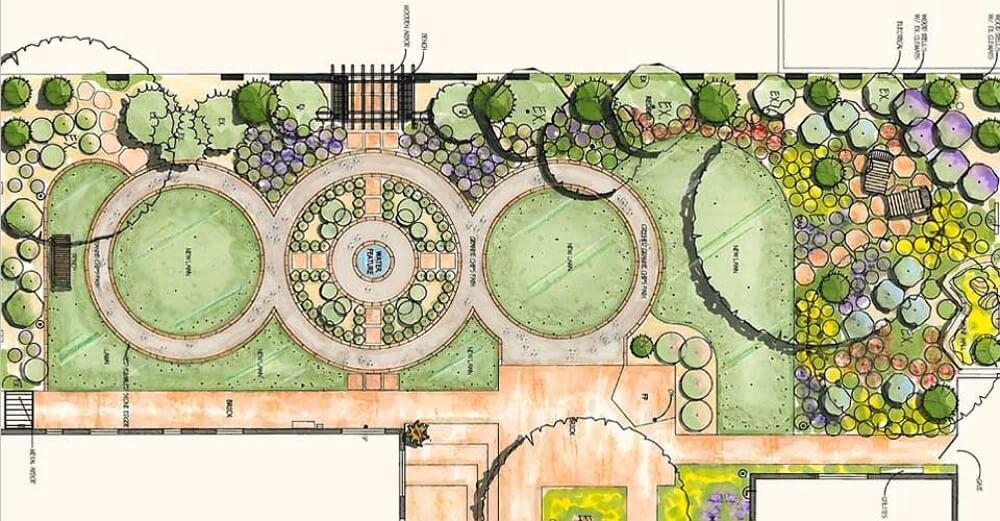Not known Factual Statements About Landscapers
Table of ContentsThe Single Strategy To Use For LandscapersLandscapers Things To Know Before You BuyOur Landscapers PDFsTop Guidelines Of LandscapersThe smart Trick of Landscapers That Nobody is Discussing7 Simple Techniques For Landscapers
- A yard attribute where water is stood for by an aggregate rock product, normally a crushed rock or granite. These are most commonly discovered in contemporary and Japanese yard layout.- A stone or flagstone outdoor patio, path, or pathway constructed without a concrete base. The base would certainly be compacted gravel and the joints would be an aggregate or walkable ground cover. - A stone keeping or complimentary standing wall surface developed without the usage of mortar. An extremely knowledgeable mason is needed for a completely dry pile rock wall surface. A lot of wall surfaces in Rose city are moist piled, also if they seem. - An underground structure that gather water and allows it to slow percolate into the dirt around it.
Landscape style that is compatible with a websites' atmosphere in both appearance and sustainability without adverse effects to the environment. Bordering in the landscape is a line of separation that creates aesthetic rate of interest in the garden by dividing one section from another section.
Locations can also have a sensation of "enclosure" supplied by trees, other plantings, fencings, or screens. The landscape near the access to a building.
The smart Trick of Landscapers That Nobody is Talking About

The aspect in a landscape style or area in a landscape that is meant to be most prominent. The focal factor can be a plant, rock, sculpture, gathering space, or various other landscape attribute.
:max_bytes(150000):strip_icc()/GettyImages-154046398-c39f1daf45a84601b328d78ed8630660.jpg)
Not known Facts About Landscapers
Low plants that are allowed or motivated to spread out over a location. Can refer to any kind of "tough" garden elements including statuary or stones however the majority of commonly is used to refer to paths, outdoor patios, and walls - Landscapers.: Height difference between the degree of water in a pond (or the level of the pump if it sits outside the pond) and the top outlet of water which impacts efficiency of the water pump in gph (gallons per hour).
A chemical utilized to manage weeds. Fencing boards that run horizontally, often utilized in contemporary or Japanese-inspired landscape designs. Lines that define areas within a landscape idea. These commonly expand from edges or vital attributes of news an existing framework. Correct usage of fictional lines can assist the landscape feel linked to the home and other elements.
Conventional PNW landscapes are informal. A plant that spreads out more than wanted, or into habitats where it does damages.
The 7-Second Trick For Landscapers
Can include head placements and protection, pipeline sizing, GPM specifications, and products needed to install this system. Certified expert that makes landscapes, schooled in engineering and design as well as in gardening.
Landscape developers typically have much less education than Landscape Architects and are not accredited. A finished landscape style, outlining all aspects for the new landscape.
Calcium product utilized to raise the pH in soil, which will certainly make it much less congenial to moss (Landscapers). A water tight HDPE product utilized below ponds, streams and waterfalls in water features. Making use of lots of plantings of the same selection to load in an area in the landscape. This can lower upkeep and water use in the yard.
A mix of concrete, sand, and water that is used in rock masonry for establishing stones and joints. A layer of compost or bark dirt applied at the base of a plant. A mass growing of moss. A plant that was present in a geographical place before individuals started transforming the landscape.
The 30-Second Trick For Landscapers
Just how the garden or a garden aspect is prepared in relationship to an existing or brand-new Continue attribute or to a direction. Preserving a yard without making use of chemical herbicides, pesticides, or plant foods. Turfs that are not cut yet expanded in landscapes as perennials. This is a partially open sided leisure or recreation area that adjoins a house, used for entertaining, outside eating and merely enjoying the outside atmosphere.

Plants that supply seasonal passion and after that die back in the winter months. Cold period this turf that is the most usual lawn grass in Rose city, OR and the rest of the PNW.An open roofed framework over an outdoor patio or other landscape feature.
Lava aggregate varying in size from 1/4" to dust. One of the most common landscape crushed rock in the PNW. Area of the landscape made to deal with rainfall water up until it can saturate into the ground. A chain that regulates water as it travels from a roof rain gutter to the ground. Yard structure that develops a planting location that is contained and greater than the bordering grade.
Structure made from timber, concrete, paving stones, blocks or various other materials for stabilizing slopes and stopping too much erosion. Slim gutter. Creating a garden attribute being composed mainly of rocks with growings that complement and can prosper in the rough environment. Sprinkler head design that revolves a stream of water across an area.
The Best Strategy To Use For Landscapers
